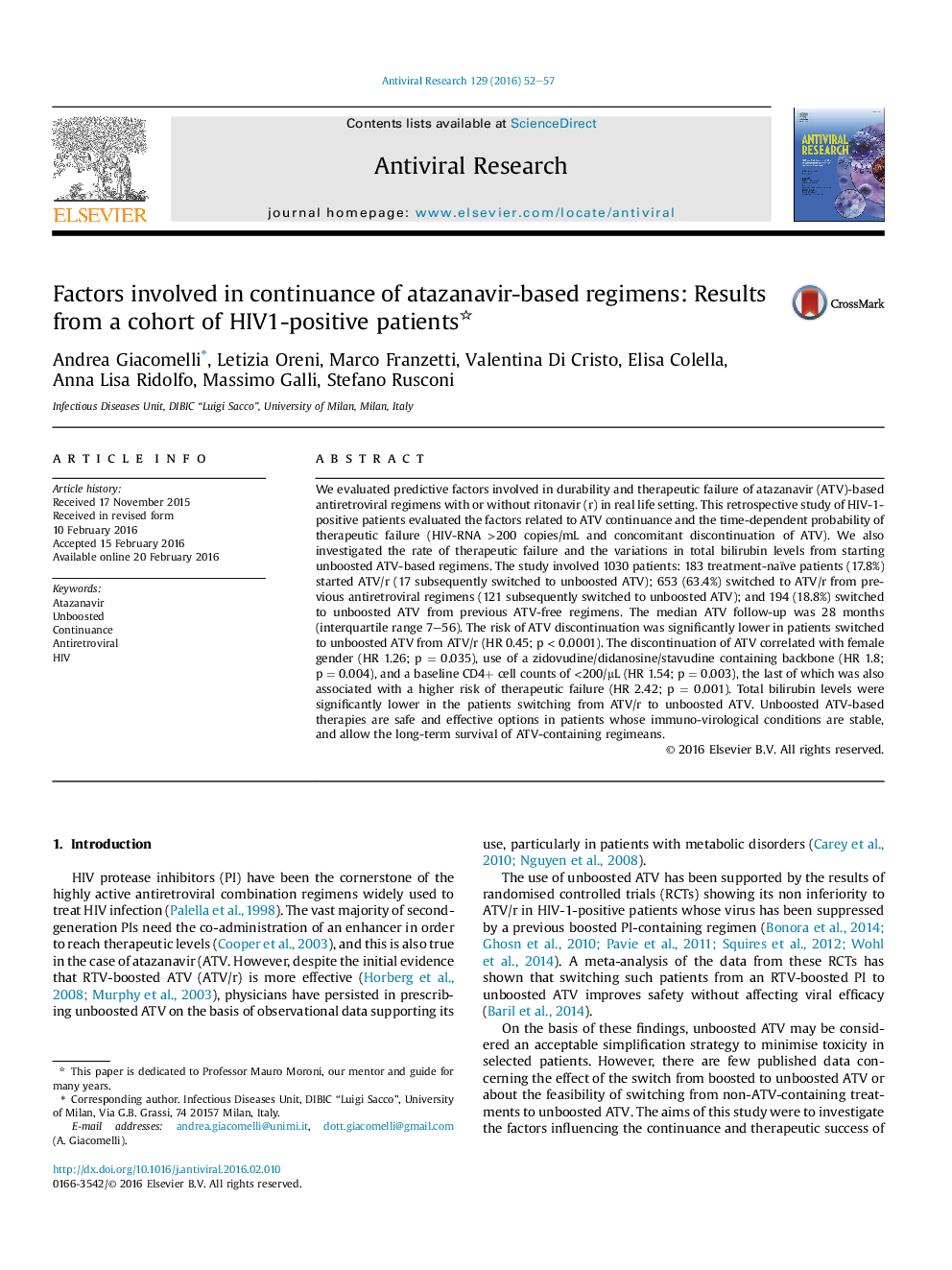| کد مقاله | کد نشریه | سال انتشار | مقاله انگلیسی | نسخه تمام متن |
|---|---|---|---|---|
| 5821845 | 1557814 | 2016 | 6 صفحه PDF | دانلود رایگان |

- The switch from ATV/r to unboosted ATV doubles the time of ATV administration.
- Different toxicity and discontinuation rates have emerged in women and in subjects who switched from ATV/r to unboosted ATV.
- Therapeutic failure has been significantly related to CD4<200/μL at ATV start and detectable HIV-RNA after 6 months of ATV.
We evaluated predictive factors involved in durability and therapeutic failure of atazanavir (ATV)-based antiretroviral regimens with or without ritonavir (r) in real life setting. This retrospective study of HIV-1-positive patients evaluated the factors related to ATV continuance and the time-dependent probability of therapeutic failure (HIV-RNA >200 copies/mL and concomitant discontinuation of ATV). We also investigated the rate of therapeutic failure and the variations in total bilirubin levels from starting unboosted ATV-based regimens. The study involved 1030 patients: 183 treatment-naïve patients (17.8%) started ATV/r (17 subsequently switched to unboosted ATV); 653 (63.4%) switched to ATV/r from previous antiretroviral regimens (121 subsequently switched to unboosted ATV); and 194 (18.8%) switched to unboosted ATV from previous ATV-free regimens. The median ATV follow-up was 28 months (interquartile range 7-56). The risk of ATV discontinuation was significantly lower in patients switched to unboosted ATV from ATV/r (HR 0.45; p < 0.0001). The discontinuation of ATV correlated with female gender (HR 1.26; p = 0.035), use of a zidovudine/didanosine/stavudine containing backbone (HR 1.8; p = 0.004), and a baseline CD4+ cell counts of <200/μL (HR 1.54; p = 0.003), the last of which was also associated with a higher risk of therapeutic failure (HR 2.42; p = 0.001). Total bilirubin levels were significantly lower in the patients switching from ATV/r to unboosted ATV. Unboosted ATV-based therapies are safe and effective options in patients whose immuno-virological conditions are stable, and allow the long-term survival of ATV-containing regimeans.
Journal: Antiviral Research - Volume 129, May 2016, Pages 52-57